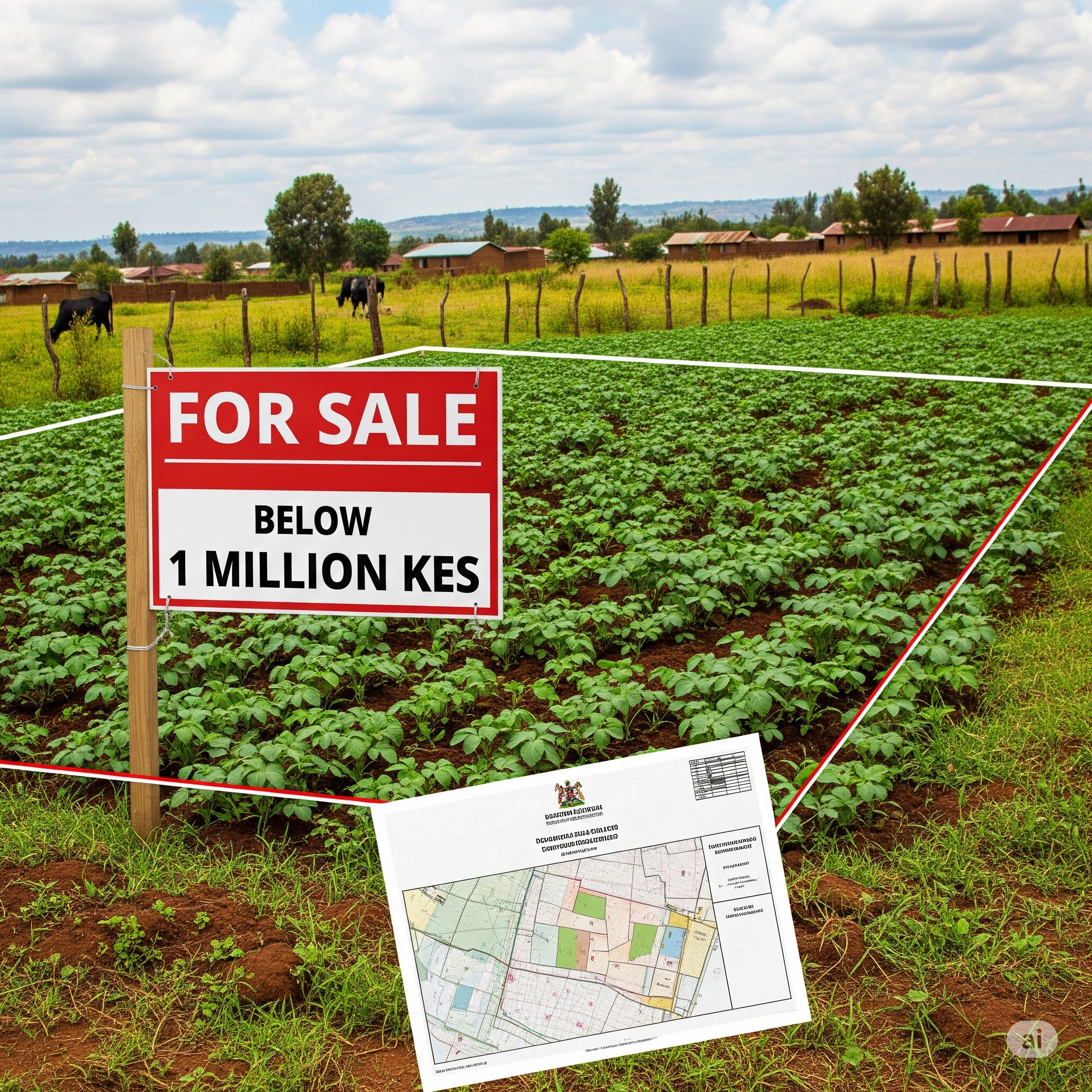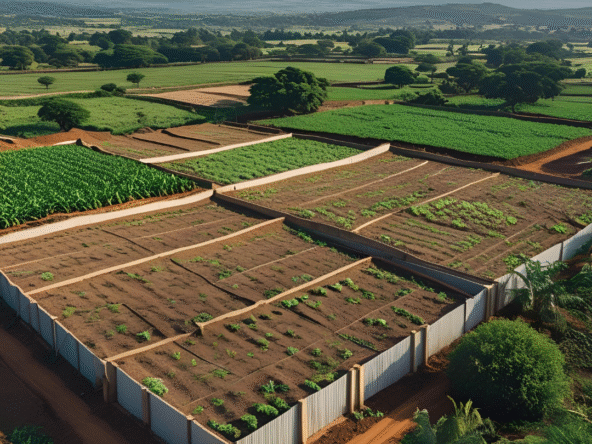As land prices continue to rise in urban centers, more Kenyans are turning to agricultural land as both an investment and a lifestyle choice. Whether your goal is to grow food, raise livestock, or eventually build a retirement home, farming plots under KSh 1 million in Kenya offer an affordable entry point. These parcels can also serve as a buffer against inflation and land scarcity.
However, finding legitimate, productive land at this price point requires careful selection and proper documentation. This article outlines where to look, what to check before buying, and how to make sure your budget farmland is truly a smart investment.
Areas Where You Can Still Find Farmland Under 1 Million
There are several locations where land for farming is still accessible at under a million shillings, especially for 1/8-acre, 1/4-acre, and 1-acre plots in rural and peri-urban zones. Some of the most sought-after areas include:
- Matuu and Kithimani – Fertile soil, road access, suitable for mango, maize, and goat farming
- Isinya and Kisaju – Ideal for dryland agriculture, poultry, greenhouses, and irrigation-based farming
- Nanyuki outskirts – Good for small-scale dairy, horticulture, and beekeeping
- Makuyu and Kenol – Near Nairobi, known for avocado, banana, and nursery crops
In areas like these, you can often find plots through chamas, SACCOs, or bulk-buying options as explained in the land buyers guide in Kenya. These group approaches tend to reduce cost per unit and ease the legal process.
What You Get for Less Than a Million Shillings
The size and quality of the land you can purchase will vary depending on location, road access, and soil fertility. In remote zones, you might get more acres for your money, but infrastructure may be limited. Below is a general guide:
- Matuu/Kithimani: 1 to 2 acres – Mostly used for open-field farming
- Kisaju/Isinya: 1/4 to 1 acre – Suited for poultry, dairy, and greenhouse farming
- Nanyuki (interior areas): 1 to 5 acres – Works well for long-term projects and tree planting
- Makuyu/Kenol: 1/8 to 1/4 acre – Close to Nairobi, best for horticulture and seedlings
Plots farther from tarmac roads often come cheaper, but it’s important to evaluate whether the area is developing and if the land will remain productive or accessible in rainy seasons.
What to Check Before You Buy
As emphasized in this detailed piece on how to sell land in Kenya, any land purchase should begin with a formal search at the Ministry of Lands. Other checks include:
- Title deed verification to ensure the land isn’t under dispute
- Soil testing to determine suitability for your planned crops
- Zoning approval to confirm agricultural designation
- Water access such as boreholes, river proximity, or community irrigation
- Neighbour usage to gauge what’s thriving in the area
Additionally, some plots are sold through legal representatives. Always verify that a power of attorney is current, specific to the land being sold, and properly registered.
Small Farm Ideas That Can Work on Limited Land
You don’t need large acreage to profit from agriculture. With one acre or less, several practical ventures can generate steady income:
- Poultry keeping, particularly Kienyeji chicken for eggs and meat
- Greenhouse farming for tomatoes, peppers, and herbs
- Dairy goats, which require minimal feed and space
- Bee farming, especially in dryland regions
- Tree nurseries or fruit seedlings, which are in growing demand
Over time, many landowners develop simple homes on their farms for personal use or rental purposes. These affordable home options make it easier to transition from part-time farming to full homesteading.
Why Land Under 1 Million is a Smart Long-Term Investment
Even if your land lies idle for a few years, the value tends to rise. Kenya’s growing population, infrastructure expansion, and demand for food security all contribute to land appreciation. For example, plots on Kangundo Road that cost KSh 350,000 in 2016 now fetch over KSh 900,000.
In this overview on plots and homes under 1 million, trends show that buyers include young professionals, retirees, diaspora investors, and agri-preneurs. For many, the land starts out as a farm and eventually becomes a family home.
Land Buying Options and Financing
You don’t always need cash upfront to own land. Alternative financing methods include:
- SACCO loans specifically for land acquisition
- Group buying through investment groups or chamas
- Installment plans offered by developers (3 to 18 months)
- Diaspora land packages with flexible payment timelines
- Agri-cooperatives that link land to input financing
However, as mentioned in this cautionary article on bank repossessed houses, not all listings are genuine. Fake land deals often appear on social media, promising “poa deals” or claiming urgency. Always involve a lawyer and verify every document before paying.
Secure Your Rights Beyond Purchase
Even after buying, land needs to be secured through proper transfer, fencing, and community awareness. If your land was acquired through inheritance or involves multiple claimants, review your security of tenure and be aware of land succession laws.
Buying farmland isn’t just about getting soil it’s about long-term control, sustainability, and peace of mind.
Budget farmland in Kenya remains one of the most accessible and practical ways to grow your wealth. For under KSh 1 million, you can get started with crop farming, livestock keeping, or even tree planting in areas with real development potential. But affordability must go hand-in-hand with due diligence. If the deal seems too good or too urgent, take a step back and consult the right professionals.
With clear goals, verified documentation, and the right location, your farming plot can yield more than just crops it can offer a future.


